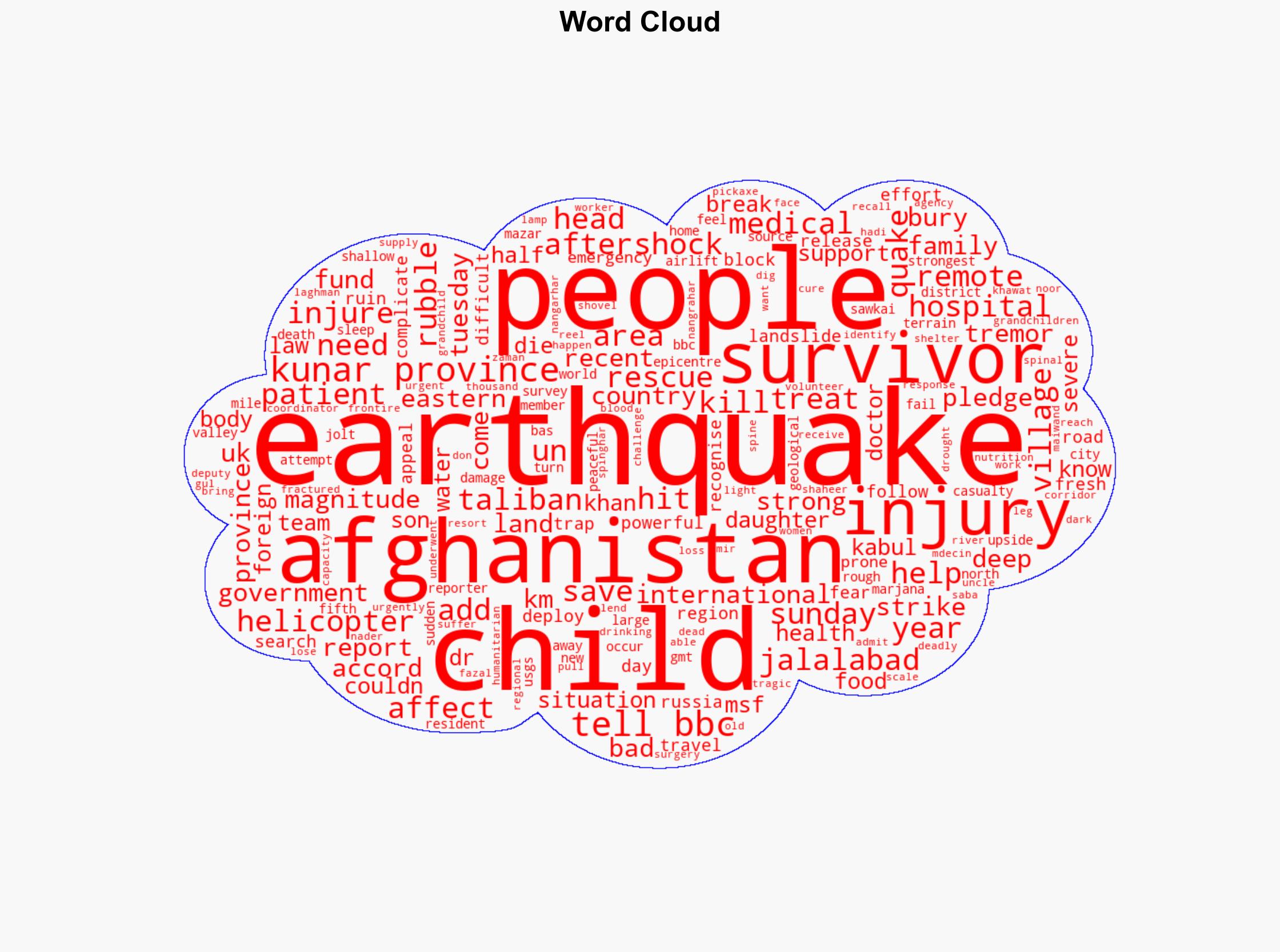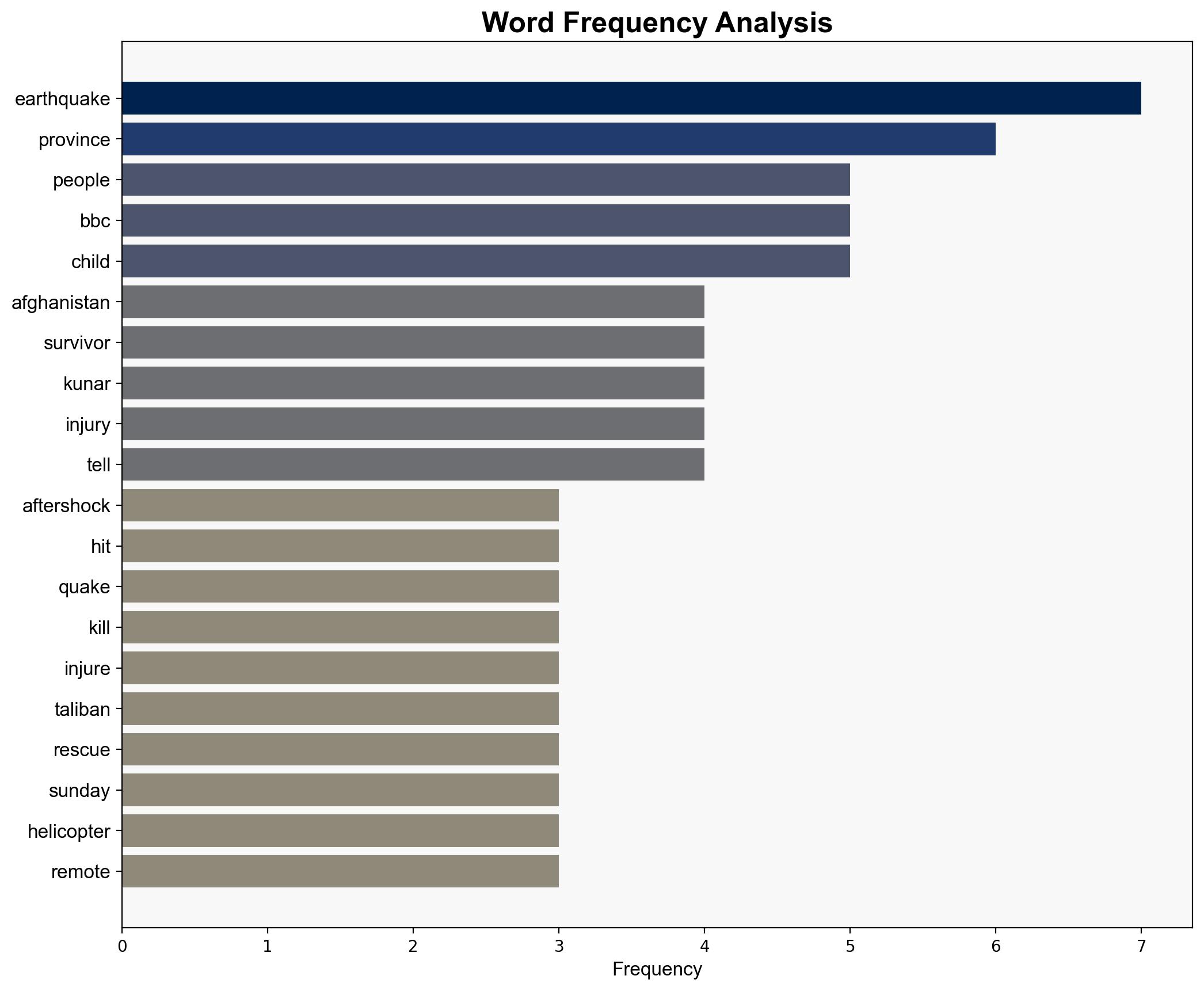Aerial search for survivors after Afghan quake kills 800 people – BBC News
Published on: 2025-09-02
Intelligence Report: Aerial search for survivors after Afghan quake kills 800 people – BBC News
1. BLUF (Bottom Line Up Front)
The most supported hypothesis is that the Afghan government’s capacity to manage the earthquake crisis is severely limited, necessitating urgent international intervention. Confidence level is moderate due to potential underreporting and logistical challenges. Recommended action is to coordinate international aid efforts, focusing on immediate humanitarian relief and infrastructure restoration.
2. Competing Hypotheses
Hypothesis 1: The Afghan government, under the Taliban, is effectively managing the crisis with available resources, and international aid is supplementary.
Hypothesis 2: The Afghan government’s response is inadequate due to logistical, political, and resource constraints, making international aid essential for effective crisis management.
Using ACH 2.0, Hypothesis 2 is better supported. Evidence includes reports of blocked roads, helicopter deployment challenges, and the Taliban’s appeal for international help. The magnitude of the disaster and the reported need for urgent humanitarian assistance further support this hypothesis.
3. Key Assumptions and Red Flags
Assumptions:
– The Taliban’s reported figures on casualties and damage are accurate.
– International aid can be effectively coordinated and delivered despite political complexities.
Red Flags:
– Potential underreporting of casualties and damage due to remote locations.
– Inconsistent reports on the effectiveness of rescue operations.
– Possible political motives influencing the Taliban’s appeal for international aid.
4. Implications and Strategic Risks
The earthquake exacerbates existing humanitarian crises, potentially destabilizing the region further. Risks include:
– Escalation of humanitarian needs leading to increased migration pressures.
– Potential exploitation of the crisis by extremist groups to gain influence.
– Strain on international relations if aid is perceived as politically motivated.
5. Recommendations and Outlook
- Coordinate with international partners to ensure timely and effective delivery of aid, focusing on food, water, and medical supplies.
- Engage with local communities to improve communication and logistical support for rescue operations.
- Scenario Projections:
- Best Case: Effective international aid stabilizes the situation, preventing further humanitarian deterioration.
- Worst Case: Inadequate response leads to increased casualties and regional instability.
- Most Likely: Mixed success in aid delivery, with some areas receiving timely help while others remain underserved.
6. Key Individuals and Entities
– Nader Khan: Earthquake survivor who lost family members.
– Mir Zaman: Survivor involved in rescue efforts.
– Dr. Shaheer: Volunteer identifying urgent needs.
– Dr. Noor Saba: Medical professional treating injured patients.
7. Thematic Tags
national security threats, humanitarian crisis, regional focus, disaster response





